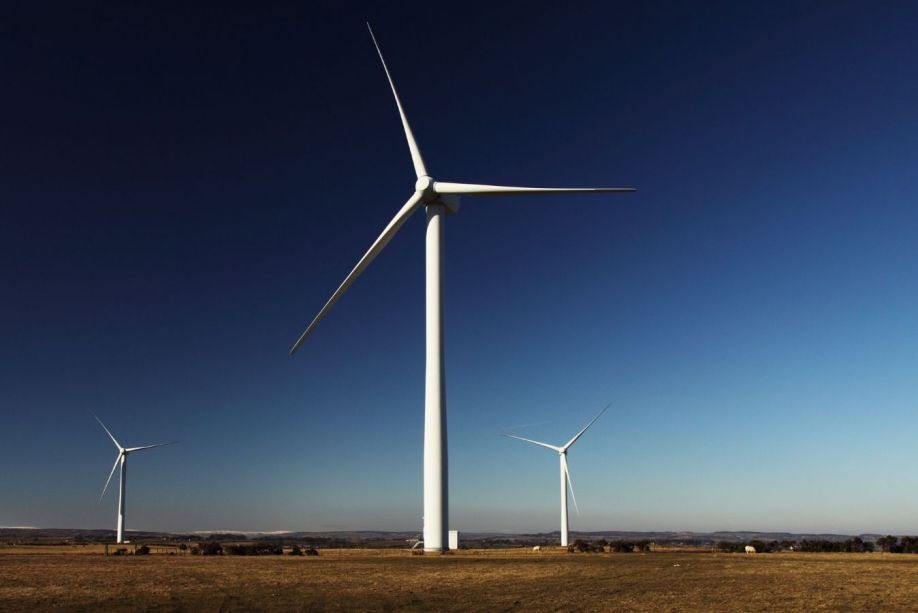What Is the Carbon Footprint of Wind Turbines?

As renewable energy gained national popularity, scientists developed production mechanisms that reached toward smaller footprints. Recent tax incentive extensions provide financial support for wind turbine customers, increasing residential and commercial purchases. The government’s support of clean energy development is up against significant ecological challenges, however.
Like all technological devices, wind turbines generate carbon emissions. Until America develops enough renewable power to support all industrial production, turbines may continue generating atmospheric pollution. Over time, professionals predict the effects will decrease as society transitions away from fossil fuel-reliant energy.
A Life Cycle Assessment
When evaluating the carbon footprint of any device, professionals must conduct a life cycle assessment (LCA). Rather than examining direct emissions, the evaluation begins its carbon identification starting from material extraction. The five phases of an LCA begin with material production and extend through turbine dismantling.
Mining and producing aluminum, steel, concrete and more, all affect the environment. If a production facility runs on fossil fuels, the assessment adds the emissions to a turbine’s footprint. The construction process produces nearly 80% of a turbine’s emissions.
The transportation of materials and turbines additionally creates a sustainability challenge. In the U.S., the transportation sector generates 29% of all greenhouse gas emissions. Over time, when combined with production pollution, turbines can generate a large carbon footprint.
The Kuznets Curve
A 1900s economist developed the Kuznets Curve theory, explaining industrial development and the leveling of class divisions. Environmentalists took the approach and aligned it with pollution, demonstrating the effect of technological advancements. Based on the Kuznets Curve, the initial production of turbines may cause increases in carbon emissions.
Over time, renewable energy may become the dominant source of electricity, eliminating in-use emissions. Additional advancements in the industry may promote low-emission power production. For instance, a team of researchers developed a method of producing hydrogen for fuel cells using wind turbines.
Unlike fossil fuels, renewable energy sources generate zero emissions when developing electricity. The combustion process associated with coal and natural gas produces atmospheric degradation. Unfortunately, the modern era of development disproved the environmental association with the Kuznets Curve.
After the industrial revolution, America’s emissions began decreasing. Rather than developing low-emission technology, national companies started outsourcing their work and materials from less developed nations. U.S. emissions were slowing because other nations’ emissions were rising.
Fortunately, environmental scientists recognized the problem, labeling it the “not in my backyard” (NIMBY) phenomenon. As a result, rather than outsourcing pollution, America began taking responsibility for its actions, in part by increasing industrial transparency.
Sustainable Solutions
Environmental engineers began development on wind turbine advancements, reducing production emissions and material pollution. Increasing the longevity of a system significantly reduces waste over time. One team developed a sustainable sealing device, increasing the lifespan of a turbine.
Conventional sealing materials degrade quickly when exposed to sunlight. The new H-profile device maintains efficiency over its lifetime. Additionally, it decreases grease pollution and material waste.
Increasing the efficiency of wind energy production also decreases emissions and pollution. Engineers increase the sustainability and electricity conversion rates of turbine generators, maximizing power development. Creating optimal renewable energy storage systems also increases the efficiency of wind power.
Renewable energy storage is a relatively new industry, creating sustainability challenges. The space and materials needed for conservation and meeting real-time demands limit the sustainability of energy storage. Compressed air systems offer a low-emission and pollution-free alternative to conventional energy storage techniques.
Air is abundant on Earth, and its pressurized storage poses no adverse environmental effects. The systems can help energy companies meet peak-hour energy demands while optimizing turbine efficiency. Using technological advancements to support wind power production and expansion, society may develop a clean electric grid.
A clean electric grid would significantly shrink the national carbon footprint. The United States’ Build Back Better plan will distribute $2 trillion dollars to the renewable energy sector. Engineers and researchers may access this funding to develop efficient storage systems and turbine technology.
Advancements in the accessibility and distribution of clean energy increase the nation’s sustainability. It additionally supports economic development. Companies may significantly shrink their carbon footprints by powering office spaces, warehouses, and machinery with wind energy.
The eco-consumerism movement increases the demand for sustainably generated goods and services. America can shift its power reliance towards wind energy, increasing commercial revenue and decreasing carbon emissions.
Increasing Ecological Protection
Consumers can promote sustainability in the wind power industry by financially supporting development. Though the carbon footprint remains large, engineers will decrease production emissions over time. Additionally, consumers may continue purchasing turbines because they generate less environmental degradation than fossil fuel-derived energy.
Wind power tax incentives also help individuals and companies support clean energy for less. Consumers can also increase ecological protection by voting for change.
Comments (0)
This post does not have any comments. Be the first to leave a comment below.
Featured Product

